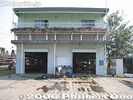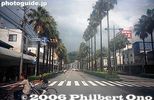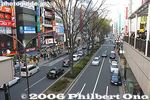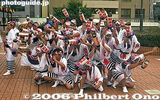 Image search results - "wa" Image search results - "wa" |

Three-day (Aug. 9-11, 2006) rowing route around the southern half of the lake by the Kyoto Univ. rowing club.1st day: Home base in Seta River to Manohama (crew change), then to Omi-Maiko.
2nd day: Omi-Maiko to Manohama, then to Chomeiji.
3rd day: Chomeiji to Manohama where crew changes. Then to home base in Seta River.
|
|

My video of 2023 Koenji Awa Odori. 第64回高円寺阿波おどり
|
|

My video of 2018 Koenji Awa Odori 第62回高円寺阿波おどり
|
|

My video of 2017 Koenji Awa Odori (56 troupes) 第61回高円寺阿波おどり
|
|

My video of 2016 Koenji Awa Odori (56 troupes) 第60回高円寺阿波おどり 56連の総集編
|
|

My video of Koenji Awa Odori 2015 第59回高円寺阿波おどり 40連の総集編
|
|

My video of Koenji Awa Odori 2013 Part 1/3 第57回 東京高円寺阿波おどり 総集編
|
|

My video of Koenji Awa Odori 2013 Part 2/3 第57回 東京高円寺阿波おどり 総集編
|
|

My video of Koenji Awa Odori 2013 Part 3/3 第57回 東京高円寺阿波おどり 総集編
|
|

My video of Koenji Awa Odori 2011 Part 1/2 高円寺阿波おどり
|
|

My video of Koenji Awa Odori 2011 Part 2/2 高円寺阿波おどり
|
|

My video of Koenji Awa Odori 2009 Part 1/3 - Kokesaku 苔作
|
|

My video of Koenji Awa Odori 2009 Part 2/3 - Kikusui-ren 菊水会菊水連
|
|

My video of Koenji Awa Odori 2009 Part 3/3 - Asuka-ren 飛鳥連
|
|

Ehime Maru Memorial in Kakaako Waterfront Park, Honolulu えひめ丸慰霊之碑The memorial is on a slope with a good view of the ocean. It was indeed a suitable place for such a memorial.
|
|

Tojinbo sign indicating the Echizen-Kaga Coastal Quasi-National Park
|
|

Haneda to Tokushima
|
|

One of Japan's grandest festivals, the Tokushima Awa Odori is a summer dance performed in central Tokushima city. Numerous dance troupes called "ren" appear in a long parade along the city's main streets for four evenings in mid-Aug. About 2 million people see it during the four days it is held. It is like a bon dance to greet the souls of the deceased returning to visit. There are other Awa Odori festivals in Japan, but the one in Tokushima is the original and largest one. "Awa" is the former feudal name of Tokushima. Photo: Entrance to one of the spectator areas called "embujo" (admission charged). 藍場浜演舞場
|
|

Uwajima Station
|
|

Uwajima Castle tower (Important Cultural Property), Ehime Prefecture.
|
|

Crowd at JR Koenji Station on Awa Odori night.The Koenji Awa Odori is basically a parade of dancers. Many groups of dancers from various parts of Japan participate in the parade that follows the main shopping streets near Koenji Station on the Japan Railways Chuo Line in Tokyo.
|
|

Occupying a huge plot of land in the center of the city, Kanazawa Castle has undergone extensive renovations and reconstruction. The main castle buildings are now magnificently restored.
|
|

Kenrokuen is one of Japan's three most famous gardens (besides Korakuen in Okayama and Kairakuen in Mito, Ibaraki). The garden was originally the castle garden for Kanazawa Castle. Katsurazaka Entrance to Kenrokuen Garden 桂坂口
|
|

Nakagusuku Castle is part of a World Heritage Site of Okinawan gusuku castles. This is a view looking eastward from the base of the 3d enclosure (migusuku). Photos in this album all by Michael Lynch. Constructed in mid-fourteenth century of limestone rocks, placed without the use of mortar, Commodore Perry praised the construction technique on his visit to Okinawa in 1853.
|
|

Map of Kanazawa Castle Park and Kenrokuen Garden
|
|

Yasukuni Shrine is Japan's most prominent shrine for the war dead. Near Kudanshita Station on the Tozai Subway Line. This is the first giant torii
|
|

Very little remains of Otowa castle originally built by Lord Gamou Sadahide. Two battles took place here in 1496 and 1503. Road to Otowa Castle on the hill seen on the left.
|
|

Hino's most prominent shrine is best known for the Hino Matsuri festival on May 2-3. The shrine was originally atop Mt. Watamuki, Hino's tallest mountain. It was moved to its present location in 796.
|
|

PR poster for the Kamogawa Odori geisha dance held during May 1-24 in Pontocho.
|
|

Kakegawa Castle as seen from the train
|
|

Kakegawa Station, south entrance
|
|

Kanagawa Prefecture's largest Awa Odori is held annually during the last weekend in July in this city of Yamato. Preview event near Yamato Station.
|
|

Bridge to castle grounds. 5-min. walk from Fukui Station.
|
|

Three boats are used for the trip, sighted here off shore near JR Hira Station on the Kosei Line. 湖西線比良駅の沖
|
|

On the Sunday before the second Monday of Jan., 33 hectares of a hill called Wakakusa-yama (seen in the distance here) next to Nara Park is burned at night.The burning hill looks more spectacular from afar, but we went up close.
|
|

Nose Myokenzan Betsuin at a street corner. In Feb., priests at this small temple splash cold water on themselves for 30 min. Near Honjo-Azumabashi Station on the Toei Asakusa Line or JR Kinshicho Station on the Sobu Line.
|
|

JR Tachikawa Station
|
|

Kanayama Jinja Shrine is a small shrine within the grounds of the Wakamiya Hachimangu Shrine near Kawasaki Daishi Station. On the first Sun. of April, it holds this now-famous Kanamara Festival nicknamed the Phallus or Fertility Festival. Festival starts at 11 am. But a large crowd was already there well before that time. Entrance to shrine on the day of the Kanamara Festival. (If you're below age 18, please leave now.)
|
|

Seta Rowing Club's 2-story clubhouse located in Otsu, Shiga Prefecture. The club is a registered NPO. The club is named after Seta River at the southern tip of Lake Biwa. Regattas are also held on the river, Lake Biwa's sole outflowing river.
|
|

Bird's eye view of Shirakawa-go from Ogimachi Castle ruins.
|
|

Side view of Wada-ke House
|
|

JR Kawagoe Station 川越駅
|
|

Kawagoe Matsuri is a parade of ornate floats during the day and evening in the city's old town of traditional buildings. Around 15 floats appear during the festival. Held on the third weekend in Oct. Main road where the festival will climax in the evening.
|
|

Entrance to Honmaru Goten palace, Kawagoe Castle.
|
|

Gate to Kitain, a Tendai Buddhist temple. Part of Kawagoe's National Important Traditional Townscape Preservation District (重要伝統的建造物群保存地区).
|
|

PR poster designed by Tetsuo OshiroPoster for the race.
京都大学ボート部OBの尾城徹雄様に作成したポスター。大学内や大津市石山商店街などで張り出された。
|
|

Lake Biwa is near the center of Honshu island between Nagoya and Kyoto.
|
|

From late April to early May, five long strings of giant carp streamers swim in the air high above the Sagami River in Sagamihara, Kanagawa. This event was started in 1988.
|
|

One of two giant kitesThis festival has two giant kites and two smaller (but still large) kites. Resting on its side, the kite was scheduled to fly at 2 pm. The kanji characters read "Michi no Eki" in reference to a new train station built in the town.
|
|

Shirakawa-go is also a National Important Traditional Townscape Preservation District (重要伝統的建造物群保存地区).
|
|

The memorial was unveiled on Feb. 9, 2002, a year after the accident.
|
|

Tojinbo in Mikuni-cho is spectacular, natural rock columns and walls on the coast. Hiking trails and boat rides give you a closer look at this rare natural monument. Tojimbo is accessible by bus from JR Awara Onsen Station on the Hokuriku Line.
|
|

Hi Philbert! Welcome aboard!
|
|

Spectator seats. Admission is 1,000 to 2,000 yen.
|
|

Fighting bull statue in front of Uwajima Station.
|
|

Castle tower
|
|

Each dance troupe starts with a lantern bearer showing the name of the troupe.The dance is quite simple. While bobbing up and down, the dancer holds her hands above the head and shakes the fingers. This hand gesture indicates that the person has gone crazy. It is therefore nicknamed the "fool's dance." The dance is held on the last weekend in August.
|
|

Kanazawa Castle was the base for the Kaga Domain (Ishikawa and Toyama Prefectures) ruled by the Maeda clan 1583–1871 starting with Maeda Toshiie.
|
|

World Heritage Marker. Photo copyright 2009 Michael Lynch.
|
|

Ninomaru Northern Stone wall along a moat. 二の丸北面石垣
|
|

Kenrokuen is classified as a "kaiyu-shiki teien" (回遊式庭園) or "circular-strolling Japanese garden." It's a common and classic Japanese garden design where you simply walk around the garden, usually around a central pond.
|
|

Path to shrine
|
|

The castle is somewhat out of the way. It's a 15-min. walk from the nearest bus stop.
|
|

Later the shrine became Lord Gamou's family shrine and it was revered by Hino merchants during the Edo Period. This is the Shrine grounds. Map
|
|

Pontocho Kaburenjo theater, venue for Kamogawa Odori.
|
|

Being my first regatta, I was at first daunted by the rowing terminology for the different types of boats.
|
|

Kakegawa Station, north entrance
|
|

Yotsuashi-mon GateMain gate to enter the castle grounds. A reconstruction.
四足門
|
|
|
|

Bridge to castle grounds with prefectural capital building looming ahead.
|
|

Arriving Omi-Maiko on Day 1. Rowing around the lake has been an annual tradition.
|
|

Wakakusa-yama hill in JanuaryWakakusa-yama hill actually has three hills. We see only the first one here.
|
|

Shrine hall
|
|

JR Tachikawa Station entrance
|
|

Shrine banners and cherries in full bloomThe red banner says "Kanayama Jinja" with an phallus (erect) logo on the top.
|
|

Seta Rowing Club's clubhouse. Boats are stored on the bottom floor, while the 2nd floor has office space, ergo machines, meeting room, locker room, etc. Web site here
|
|

Path to Wada House entrance
|
|

JR Kawagoe Station plaza
|
|

One of the picturesque streets of the city.
|
|
|

Kitain Main hall, Kawagoe
|
|

The shrine also holds the Hino Matsuri on May 2-3.
|
|

There are five rows of streamers. In Japan, the koi carp is regarded as a symbol of valiant manhood because it swims up the river against the rapids.
|
|
|
|
|

Huge rock columns stand about 9 stories (25 meters) high.
|
|

Crowds already line Tokushima's main street soon to be closed to traffic.
|
|

Shopping arcade
|
|

Inside Uwajima Castle tower.
|
|

The troupe can consist of children (as young as age 2 or 3), women, and men.The Awa Odori originated 400 years ago in Tokushima Prefecture (in Shikoku) where it is one of Japan's most famous festivals. Although it is not as large as the one in Tokushima, the Koenji Awa Odori in Tokyo has become a major summer festival in Tokyo.
|
|
|

Sacred Site. There are eight special places of worship (Utaki) located within the castle walls. This view looks toward the East from the inside of the 1st enclosure. Photo copyright 2009 Michael Lynch.
|
|

Shinmaru Park 新丸広場
|
|

Kasumigaike Pond and the famous Kotoji-toro stone lantern. The lantern is shaped like a bridge that supports a string on the koto instrument. 霞ヶ池 徽軫灯籠
|
|
|

The castle met its demise in 1522 less than 60 years after it was built, after a war within the Gamou Clan. It now serves as a large hilltop park with good views of the surroundings. Otowa Castle marker
|
|

Torii at Umamioka Watamuki Shrine in Hino, Shiga Pref.
|
|

Pontocho is a narrow alley and known as a geisha district.
|
|

Carrying back a single sculling boat
|
|

Karahashi Bridge as the starting point for alumni races
|
|

Main street in front of station
|
|

Steps to the castle tower
|
|

Pre-festival event held in the afternoon, Yamato Awa Odori
|
|
|
|
|

Dry grass ready to burn...
|
|

Barrels of cold water in front of shrine
|
|

JR Tachikawa Station walkways
|
|

Pumping (or humping) the...
|
|

Oars and boats stored on the bottom floor. The club offers 2-hour rowing lessons on Sundays during May to Nov. Address: 6-1 Ogaya, Otsu, Shiga 520-2144 Japan. Phone/Fax: 077-545-9961, Email: info@setarc.jp
|
|

Close-up of Ogimachi
|
|

Main house on left and latrine on right with large vats to gather fertilizer.
|
|

Hon-Kawagoe Station 本川越駅
|
|

Children lead the way for a float at Kawagoe Festival.
|
|

Garden
|
|

Main hall
|
|

The cable length is 250 meters and 13mmm thick. There are about 1,200 carp streamers. They are reused every year and donated by local families. (I also noticed a few advertising carps.)
|
|
|
|

On Feb. 9, 2001, a small Japanese fisheries training boat from Uwajima, Ehime Prefecture was struck by the USS Greeneville submarine as it bolted to the surface off the coast of Honolulu, Hawaii. Nine Japanese high school students, teachers, and crewmen died aboard the Ehime Maru. A year later, a waterfront memorial was built in Honolulu.
|
|
|
|

These photos were taken in Aug. 1999.
|
|

Inside castle tower
|
|

Main road in Uwajima
|
|

The Koenji Awa Odori has become a major summer festival in Tokyo. It had a humble beginning in 1957 when it was originally called the Koenji Baka Odori. "Baka" means fool.
|
|
|

A view from the base of the West enclosure. Constructed in mid-fourteenth century of limestone rocks, placed without the use of mortar, Commodore Perry praised the construction technique on his visit to Okinawa in 1853. Photo copyright 2009 Michael Lynch.
|
|

Dobashi-mon Gate stone walls 土橋門石垣
|
|

Famous Kotoji-toro stone lantern 徽軫灯籠
|
|

Statue of Omura Masujiro (1824-1869) 大村益次郎, founder of Japan's modern army. Also pushed for the establishment of Yasukuni Shrine.
|
|

Suzuka Quasi-National Park markerThe area is within this park.
|
|

Stone bridge
|
|

Dance program for 2005.
|
|

The place was not as crowded as you would think.
|
|

Kakegawa, Shizuoka
|
|

Castle tower
|
|
|
|

Statue of castle founder and 1st lord, Yuki Hideyasu 結城秀康
|
|

They use four-man boats (called "knuckle four" in Japanese) with sliding seats. It is stable and safe, ideal for beginners.
|
|

Volunteer firemenThe hill set alight by 300 volunteer firemen and prefectural workers who climb up the hill.
|
|

Barrels of cold water
|
|

Walkway sculpture
|
|

The festival is wildly popular with people from overseas.The shrine had various phallus props to pose with.
|
|

Many boats are made in Italy.
|
|

Main house with a recently rethatched roof, making it look very smooth.
|
|

Toki no Kane, Time Bell Tower, symbol of Kawagoe. Part of Kawagoe's National Important Traditional Townscape Preservation District (重要伝統的建造物群保存地区). 時の鐘
|
|
|
|

Pagoda at Kitain temple, Kawagoe
|
|

Sekigahara saw one of Japan's most pivotal battles on Oct. 21, 1600 (Sept. 15 of Keicho 5) between Tokugawa Ieyasu's Eastern Forces and Toyotomi Hideyoshi loyalist Ishida Mitsunari's Western Forces. Ieyasu's victory in the Battle of Sekigahara sealed Japan's historical fate for the next 250 years. The former battlefield is dotted with monuments indicating the positions of various warlords during the battle.
This photo shows Mt. Momokubari where Tokugawa Ieyasu first set up his base camp for the Battle of Sekigahara. It is next to busy Route 21. A short distance east of Sekigahara Station. The former Sekigahara battlefield has numerous monuments.
|
|

Banners and a monument mark the spot on Mt. Momokubari where Tokugawa Ieyasu's first base camp was established during the Battle of Sekigahara on Sept. 15, 1600.
|
|

Ieyasu and his troops were here from about 6 am to 10 am on the day of the Sekigahara battle. He later moved closer to the front line as the battle was going his way. This is a National Historic Place. 桃配山 徳川家康最初陣跡
|
|

Steps going up to Tokugawa Ieyasu's first base camp at Momokubari during the Battle of Sekigahara on Oct. 21, 1600 (Sept. 15 of Keicho 5). Today it's just a small hill. The highway seemed to have cut through most of it.
|
|

Steps going up to Tokugawa Ieyasu's first base camp during the Battle of Sekigahara.
|
|

At the top, see the two large rocks which served as a table and bench for Ieyasu. 家康の腰掛岩と机石
|
|

Monuments marking Tokugawa Ieyasu's first base camp during the Battle of Sekigahara. The banners have the Tokugawa family crest.
|
|

View of the Sekigahara battlefield from Tokugawa Ieyasu's first base camp at Momokubari.
|
|

Monument marking Tokugawa Ieyasu's first base camp during the Battle of Sekigahara.
|
|

Another smaller monument marking Tokugawa Ieyasu's first base camp during the Battle of Sekigahara.
|
|

Sign explaining that the two rocks below were said to be used as a bench and table for Ieyasu.
|
|

Behind the monuments is a trail probably used by Ieyasu's troops on Mt. Momokubari-yama.
|
|
|

Lowering the kite
|
|

Names of the nine Japanese who died
|
|

To mark the song's 100th anniversary, a new song monument was unveiled at Kyoto University (Yoshida-South Campus) on Nov. 25, 2017.
|
|

Bungee jumping is probably not possible here.
|
|

Pre-festival warm-up performance.
|
|
|

View from top floor
|
|

Highway in front of the castle.
|
|

Rear Gate. Most visitors will enter through this gate to the castle, as it is closest to the parking and ticket sales. Photo copyright 2009 Michael Lynch.
|
|

Dobashi-mon Gate stone wall 土橋門石垣
|
|

The strolling path is not a perfect circle, but you start and finish at the same point. The strolling path is lined with Japanese pines, flowering plants, maples, etc.
|
|
|

Entrance to castle grounds, now a picnic and playground.
|
|

Stone bridge
|
|

Barrels of sake next to the theater.
|
|

Rowing team from Nagahama
|
|

Kyoto Univ. in dark blue T-shirts
|
|

Stairs to Kakegawa Castle tower
|
|

Shimizu Bank
|
|

Yamato Station
|
|

Valley between the prefectural capital (left) and police department (right).
|
|

Each boat has four rowers and cox who steers the rudder.
|
|

Bamboo torches and bamboo broomsThe bamboo torches is filled with kerosene and plugged with cotton cloth. They are used to set the hill afire. The bamboo brooms are used to spread the fire or extinguish it. The brooms burn up by the end of the festival.
|
|

The congregation gather on the steps and beat fan-shaped drums.
|
|

Street
|
|

Dickhead hat. Actually, I don't know what they call it, but that's what I call it.
|
|

One trademark of the dancers is the crescent-shaped straw hats.
|
|

Right across the clubhouse is the Annex boat house.
|
|

Shirakawa-go 白川郷
|
|

Wada House, Shirakawa-go
|
|

There is a bell at the top which is rung 4 times a day. The bell or gong looks like a temple bell.
|
|
|
|
|
|
|
|

Inscription in English
|
|

Front side of the monument has the Japanese lyrics and explanation of the song. Monument is made of stainless steel with a brushed-metal finish.
|
|

This was in front of a dept. store near Tokushima Station.
|
|

Shinmachi-bashi road in front of Tokushima Station 新町橋通りIt was Awa Odori time.
|
|

View from top floor
|
|

Outer castle wall
|
|

Stone Stairs. They lead to the 2nd enclosure. Visitors should wear sturdy walking shoes, as the stone-lined pathways and stairs can be very difficult to walk on without twisting an ankle. Photo copyright 2009 Michael Lynch.
|
|

Dobashi-mon Gate stone wall. Notice the hexagonal stones. 土橋門石垣
|
|
|

Second torii
|
|

Castle monument
|
|
|

A geisha/geiko and maiko head to the theater to see the Kamogawa Odori. Notice the different obi sash on the back.A maiko is an apprentice geisha. Her obi sah on the back is long, as well as her sleeves.
|
|
|
|
|

Shimizu Bank
|
|

Balloons, souvenirs and trinkets sold near the train station.
|
|

Stone foundation of the castle tower at one corner.
|
|

The green boat. 近江舞子上陸
|
|

Bamboo torches and bamboo broomsThe bamboo torches is filled with kerosene and plugged with cotton cloth. They are used to set the hill afire. The bamboo brooms are used to spread the fire or extinguish it. The brooms burn up by the end of the festival.
|
|

Priests appear
|
|

Sidewalk
|
|

Carving daikon. Anybody can join in and carve. 大根削りLater to be auctioned off.
|
|

The men look more like the "fools."
|
|

Club's boat dock. This narrow canal leads to Lake Biwa.
|
|
|
|
|

The bell is rung at 6 am, 12 noon, 3 pm, and 6 pm.
|
|

Tekomai geisha lead the way for a float at Kawagoe Festival.
|
|
|
|
|
|

Sagami River Koi-nobori
|
|

The parade route centers on JR Koenji Station. There are wide and narrow portions of the route.If it rains, they may stop the festival early.
|
|

Inscription in Japanese
|
|
|

Carving daikon (old photo). These men were really good at carving the daikon.
|
|

Sculpture of Awa Odori dancers on mailbox
|
|

They performed in the afternoon.
|
|

View of Uwajima city from top floor
|
|
|

Gun Port. At several locations along the North walls of the castle, gun ports may be seen, where sentries could repel invaders. Photo copyright 2009 Michael Lynch.Many visitors are surprised to learn that firearms were in existence in the 14th century.
|
|

Gate to Former Brigade Office 切手門
|
|

Karasaki Pine Tree in Kenrokuen Garden, Kanazawa, Ishikawa Pref.
|
|

You wash your mouth hands here. Built in 1940 by Japanese living in the US. 大手水舎
|
|

Hilltop left
|
|

Mikoshi portable shrine
|
|

Pontocho Kaburenjo theater
|
|

Azaleas in full bloom along the lake edge
|
|

Finish line 300 meters later
|
|

Final gate to Castle tower
|
|

Shimizu Bank's relief of Kazutoyo and Chiyo
|
|
|

Stairs to castle tower foundation
|
|
| 21782 files on 87 page(s) |
1 |
 |
 |
 |
 |
|